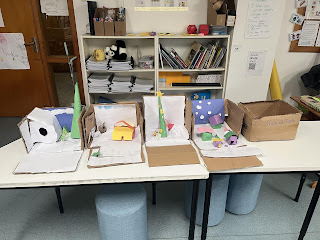How to Implement Change in Schools - Portfolio Culmination of Reading Specialist Course
We need to realize that change does not and should not happen overnight, and look towards long term sustainability. This is fueled by sharing the load, changes occurring laterally (from the top to the bottom to the top), creating new leaders within work situations, having time to collaborate, valuing all opinions and then following through with actually collaborating. Teachers having time to collaborate, having an atmosphere/work situation of respect and not overloading teachers is all essential in keeping up the energy and drive necessary to affect change.
Changes should be based on innovation, research, patterns and changing trends. In other words deep knowledge in an ever changing world needs to be valued. It is only through these aspects and methods that we can hope to close the achievement gap.
Of course teaching is not only about teaching to skills, it is also to teaching individuals all of whom have different personalities and interests. It is up to teachers to also try and find methods that work for their students. This is not something that has to be or should be done alone, as everyone in the school and board comes with their own set of experiences and knowledge that they can apply to different situations. Everyone should be coming together at a school level and at a school board level to discuss and try to suss out difficulties and subsequently solve them. When possible strategies meant to broadly improve student achievement (such as TLCPs) should be applied with results shared and improvements considered for the future.
It is clear that the education our grandparents received is not going to prepare our students for a new century, so we need to think about what is still relevant and applicable, and what aspects of education should be changed to fit the way that this world might be or probably will change for our future students.
My action plan revolves around using technology in the teaching of reading. Technology is not something to be feared, it is another tool that might be used to reach more students. This does not mean that we should do away with books all together, as books are still relevant, but technology might help us in reaching some of our harder to reach students.
This action plan came about, as technology has always felt like the biggest area of reading in which all members of our English teaching staff could improve. Many teachers in general don't know the full breadth and depth of everything their smart board can do, additionally there are so many resources online as well as learning assistance programs that we have yet to learn and discover about. I feel that attending workshops and information sessions as well as sharing tools that we have explored and compiling them into a document would be a very useful resource moving forward, both for my current school (Qatar Academy Al Khor) and for the Qatar Foundation as a whole.
Earlier in the course, I also designed a TLCP (Teaching Learning Critical Pathways) to support teaching inferencing (a skill that students are poor at in my school). TLCPs are an excellent way to target specific problem areas and close the achievement gap, as it's 6 week of intensive instruction surrounding a particular skill. Below is a video I created on why TLCPs are important.



Comments
Post a Comment